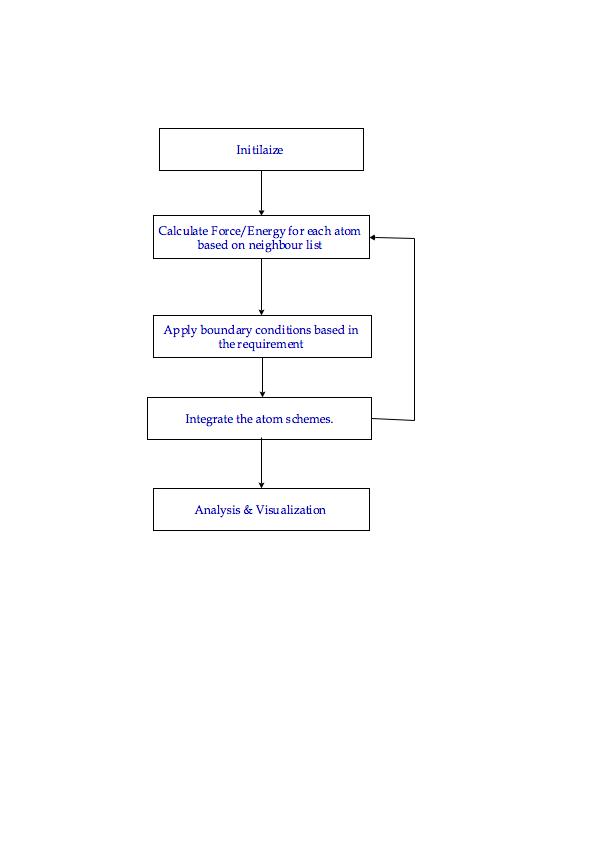CSC/ECE 506 Fall 2007/wiki2 3 pa: Difference between revisions
No edit summary |
No edit summary |
||
| Line 1: | Line 1: | ||
'''Topic: Parallelizing an application''' | =='''Topic: Parallelizing an application''' == | ||
Pick another parallel application, not covered in the text, and less than 7 years old, and describe the various steps in parallelizing it (decomposition, assignment, orchestration, and mapping). You may use an example from the peer-reviewed literature, or a Web page. You do not have to go into great detail, but you should describe enough about these four stages to make the algorithm interesting. | Pick another parallel application, not covered in the text, and less than 7 years old, and describe the various steps in parallelizing it (decomposition, assignment, orchestration, and mapping). You may use an example from the peer-reviewed literature, or a Web page. You do not have to go into great detail, but you should describe enough about these four stages to make the algorithm interesting. | ||
'''LAMMPS Algorithm:''' | =='''LAMMPS Algorithm:''' == | ||
The LAMMPS('''L'''arge Scale '''A'''tomic/'''M'''olecular '''M'''assively '''P'''arallel '''S'''ystem) algorithm is a classical [http://en.wikipedia.org/wiki/Molecular_dynamics molecular dynamics] code developed at [http://www.sandia.gov/index.html Sandia National Labs], New Mexico. This algorithm models the ensemble of particles in a solid, liquid or gaseous state. | The LAMMPS('''L'''arge Scale '''A'''tomic/'''M'''olecular '''M'''assively '''P'''arallel '''S'''ystem) algorithm is a classical [http://en.wikipedia.org/wiki/Molecular_dynamics molecular dynamics] code developed at [http://www.sandia.gov/index.html Sandia National Labs], New Mexico. This algorithm models the ensemble of particles in a solid, liquid or gaseous state. | ||
'''Sequential Algorithm:''' | ==='''Sequential Algorithm:'''=== | ||
The initialization step sets up the various parameters for the atom like number of particles, initial velocity, temperature etc. This algorithm is performed for every atoms. | The initialization step sets up the various parameters for the atom like number of particles, initial velocity, temperature etc. This algorithm is performed for every atoms. | ||
[[Image:Flow1.jpeg]] | [[Image:Flow1.jpeg]] | ||
'''Decomposition & Assignment''' | ==='''Decomposition & Assignment'''=== | ||
The LAMMPS algorithm provides two levels of concurrency in a single time step just like the ocean problem. | |||
==='''Orchestration''' === | |||
==='''Mapping''' === | |||
==='''Summary'''=== | |||
'''Summary''' | |||
Revision as of 02:02, 24 September 2007
Topic: Parallelizing an application
Pick another parallel application, not covered in the text, and less than 7 years old, and describe the various steps in parallelizing it (decomposition, assignment, orchestration, and mapping). You may use an example from the peer-reviewed literature, or a Web page. You do not have to go into great detail, but you should describe enough about these four stages to make the algorithm interesting.
LAMMPS Algorithm:
The LAMMPS(Large Scale Atomic/Molecular Massively Parallel System) algorithm is a classical molecular dynamics code developed at Sandia National Labs, New Mexico. This algorithm models the ensemble of particles in a solid, liquid or gaseous state.
Sequential Algorithm:
The initialization step sets up the various parameters for the atom like number of particles, initial velocity, temperature etc. This algorithm is performed for every atoms.

Decomposition & Assignment
The LAMMPS algorithm provides two levels of concurrency in a single time step just like the ocean problem.